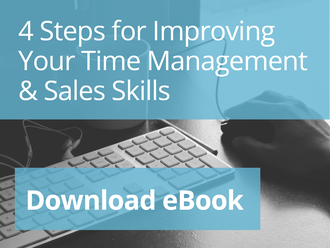Gaining Insights from Sales Data
Leaders and executives are swimming in data from a variety of sources or platforms, yet they often remain uncertain when it comes to identifying ways to improve or enhance sales efforts. It's a true challenge and the real problem is not being able to connect data with insights.
So how can data be interpreted in a way that will provide actionable steps in order to improve sales?

1. Determine Goals
Let’s begin with the most basic question: how does each salesperson know whether they are on track to hit their goal?
Most sellers simply total all of the opportunities in their pipeline. But a better and more accurate way to do this is to isolate those sales which can be counted on; the ones following the same pattern as sales that typically close. These sales have a unique pattern because in these cases the customer wants the sale as much as the salesperson.
As a result, the sales cycle is shorter and the next steps are only a few days or weeks apart. Sales that don’t happen usually have big gaps between steps—often months. Even more often, the next step is not scheduled immediately, so the seller loses at least 1-3 weeks between every step just trying to reconnect and get back on the customer’s calendar.
So, looking at the sea of opportunities in the pipeline is less helpful than simply looking at the few opportunities that fit the “closing” pattern.
2. Inspect Your Sales Pipeline
Now, let’s say we still have lots of sales in the pipeline and they add up to 10x the goal. In most cases, when the value of those pipeline opportunities far exceed the goal then we rarely take the time to fully inspect each individual deal to ensure they qualify, there is a next step, and the sales cycle matches the “closing” pattern. However, if the pipeline value is 1.5-3x the goal, the seller will likely achieve it.
Even with the right amount of “padding,” the seller may still miss their goal unless they also factor in their negotiating efficiency.
If we look at the last 10 or 100 sales that closed and compare the proposal value to the contract value we learn how much that seller typically loses during negotiation. If the seller typically loses 20% and their pipeline says they have $100k, we should only count on $80k.
3. Identify Closing Ratios
Now, let’s look at closing ratio. While it may feel like if we take a closer look at this ratio it will teach us how many “first appointments” are needed in order to reach the goal, that's not exactly the case. What we really learn from looking at this is the average ratio across multiple lead sources.
Inbound leads close at a higher ratio than hard fought outbound sales to new customers. Renewal sales to existing customers may have a higher ratio than upsell sales. So, it is important to identify the closing ratio based on each lead source.
And finally, if the salesperson’s ratio is too good, they may be spending too much time with friends instead of strangers and enemies—where the real upside exists. Sowing the right seeds now will likely bring in new sales as the goals continue to increase.
Knowing what to look for in sales data can be a tough task, but when you focus on the right things, you'll be well informed on the realities of your sales.
About Steve Bookbinder
Steve Bookbinder is the CEO and sales expert at DMTraining. He has delivered more than 5,000 workshops and speeches to clients all over the world and has trained, coached, and managed more than 50,000 salespeople and managers. Steve continuously refreshes his training content to reflect his latest first-hand observations of salespeople across industries and regions. Through him, participants in his workshops and coaching sessions learn the best practices of today’s most successful sellers and managers across industries. Steve understands that sales is a competitive game. To outperform competitors and our own personal best results, we need to out-prospect, out-qualify, out-present and out-negotiate everyone else, not merely know how to sell. Through his specialty programs in Pipeline Management, Personal Marketing, Great First Meetings, 2nd-level Questioning, Sales Negotiating, and Sales Coaching, Steve trains sales teams to master the skills they need to overcome the challenges they face in today’s world… and keep improving results year over year.





